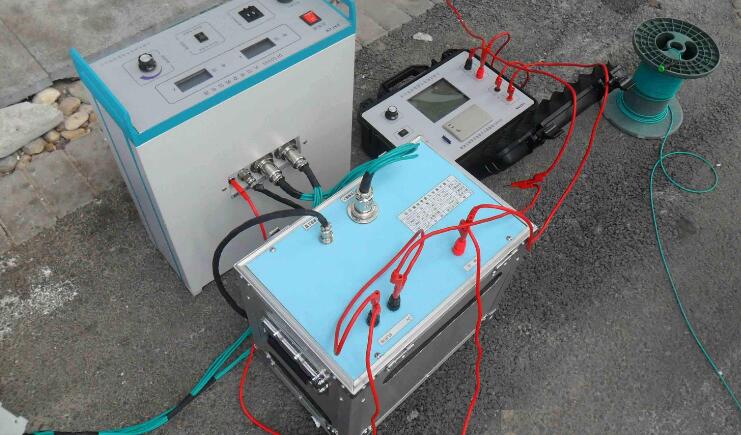The Importance of Ground Resistance Testing in Electrical Systems

In every electrical installation—whether it’s a residential building, a manufacturing plant, or a power distribution network—grounding plays a critical role in ensuring safety and system reliability. A properly designed and maintained grounding system protects equipment from damage, safeguards personnel from electric shock, and helps prevent fires caused by electrical faults. But how can we be sure that a grounding system is functioning as intended? This is where ground resistance testing becomes essential.
Ground resistance testing allows engineers and technicians to evaluate the effectiveness of an electrical grounding system, ensuring that it provides a low-resistance path for fault currents to safely dissipate into the earth. Using specialized instruments such as a (ground resistance tester), professionals can measure, analyze, and verify grounding performance with precision.
Let’s take a closer look at why ground resistance testing is so important, how it works, and the benefits it brings to electrical safety and system performance.
1. Understanding the Purpose of Grounding
Grounding (or earthing) is the process of connecting parts of an electrical system to the earth to stabilize voltage levels and provide a controlled path for fault currents.
When a short circuit, lightning strike, or insulation failure occurs, the grounding system directs excess current safely into the earth, reducing the risk of:
- Electric shock to personnel.
- Damage to electrical and electronic equipment.
- Fire hazards caused by overheating or arcing.
- System instability due to voltage fluctuations.
Without proper grounding, electrical systems become unpredictable and unsafe, especially under fault conditions.
2. What Is Ground Resistance Testing?
Ground resistance testing measures how easily electric current can flow from a grounding electrode into the surrounding earth. The lower the resistance, the better the system’s ability to disperse electrical energy safely.
This measurement is typically performed using a 接地計, a specialized instrument designed to inject a small current into the ground and measure the resulting voltage difference. From these readings, the device calculates the ground resistance value, usually expressed in ohms (Ω).
Ground resistance testing helps determine:
- The integrity of grounding conductors and electrodes.
- Soil resistivity and environmental conditions.
- The overall effectiveness of the grounding system design.
By performing these tests regularly, engineers can identify degradation or faults in the grounding network before they lead to serious problems.
3. Why Ground Resistance Testing Is Crucial
Electrical grounding systems are exposed to environmental conditions that can change over time. Corrosion, soil composition, moisture levels, and temperature variations can all affect conductivity. Without regular testing, it’s impossible to know if a grounding system still performs effectively.
Here are the key reasons ground resistance testing is so important:
a. Personnel Safety
A faulty or high-resistance ground can allow dangerous voltages to appear on metal enclosures and equipment surfaces. Proper testing ensures that any fault current will follow a low-resistance path to earth, minimizing shock hazards.
b. Equipment Protection
Sensitive equipment such as computers, control systems, and industrial automation components are vulnerable to transient voltages and static buildup. A well-grounded system prevents costly damage by stabilizing voltage levels.
c. Lightning and Surge Protection
Lightning strikes and switching surges introduce massive transient currents into electrical systems. An effective ground system provides a safe discharge path, protecting both structures and electrical infrastructure.
d. Compliance and Standards
Electrical codes and safety standards (such as IEEE, IEC, and NFPA) require periodic ground resistance testing to ensure compliance. Regular testing helps organizations meet regulatory requirements and maintain safety certifications.
e. Predictive Maintenance
Testing identifies early signs of deterioration, such as corrosion or loose connections, enabling timely repairs before a complete failure occurs. This predictive maintenance approach helps reduce downtime and costly repairs.
4. Methods of Ground Resistance Testing
There are several methods used to measure ground resistance, each suited to different environments and system configurations:
a. Fall-of-Potential (3-Point Test)
The most common and accurate method. It involves driving two auxiliary electrodes into the ground at set distances from the grounding electrode and measuring voltage drops across them.
b. Simplified 2-Point Method
Used when access is limited. It provides approximate results by measuring between the grounding electrode and a known ground reference (like a water pipe).
c. Clamp-On Method
A quick, non-intrusive method ideal for existing installations. The 接地計 clamps around a ground conductor and measures current flow and induced voltage without disconnecting the system.
d. Soil Resistivity Measurement
Often performed during system design, this test determines the electrical resistance of the soil itself, helping engineers design the most effective grounding network for local conditions.
Each method has its advantages, and the choice depends on the system layout, environment, and precision required.
5. Interpreting Test Results
Acceptable ground resistance values vary depending on the application and industry standards. However, general guidelines include:
- Power systems: Less than 1 Ω is ideal; up to 5 Ω may be acceptable.
- Telecommunications and data centers: Typically below 1 Ω for stable signal performance.
- General installations: Often within the 1–10 Ω range.
Higher readings may indicate issues such as poor soil conductivity, corroded electrodes, or broken conductors—all of which require immediate attention.
6. The Role of Technology in Modern Ground Testing
Modern 接地計 devices have evolved beyond simple resistance meters. They now include advanced features such as:
- Automatic compensation for stray currents or interference.
- Data logging and wireless connectivity for efficient reporting.
- GPS integration for precise test location tracking.
- Multi-frequency testing to improve accuracy in challenging soil conditions.
These innovations make testing faster, safer, and more reliable—enabling engineers to perform comprehensive diagnostics with minimal disruption.
7. Best Practices for Effective Ground Resistance Testing
To maintain accuracy and safety, follow these key best practices:
- Test regularly: Perform annual or semi-annual tests, especially in high-risk or mission-critical environments.
- Record and trend results: Keep historical data to identify gradual increases in resistance.
- Test after installation or maintenance: Always verify grounding systems after construction, upgrades, or repairs.
- Consider environmental factors: Soil moisture, temperature, and composition can significantly affect readings.
- Use certified instruments: Ensure the 接地計 is properly calibrated and compliant with recognized standards.
Consistent testing ensures that the grounding system remains effective throughout its operational life.
8. The Broader Impact: Safety, Efficiency, and Reliability
A properly maintained grounding system doesn’t just protect people—it also enhances the overall reliability and efficiency of electrical operations. By maintaining low ground resistance:
- Electrical noise and interference are minimized.
- System voltage stability is improved.
- Equipment lifespan is extended.
- Power quality and operational uptime are optimized.
In industrial settings, this directly translates into fewer interruptions, safer working conditions, and lower maintenance costs.
Final Thoughts
Ground resistance testing is one of the most vital yet often overlooked aspects of electrical system maintenance. It ensures that grounding networks perform their fundamental safety function—providing a secure path for fault currents and protecting both people and equipment.
Using reliable testing tools such as a 接地計, technicians can detect weaknesses early, verify compliance with standards, and maintain the electrical integrity of their systems.
In a world increasingly dependent on complex electrical and electronic infrastructures, ground resistance testing isn’t just a best practice—it’s a necessity. By making it a regular part of maintenance routines, organizations can achieve safer, more efficient, and more resilient operations for years to come.



